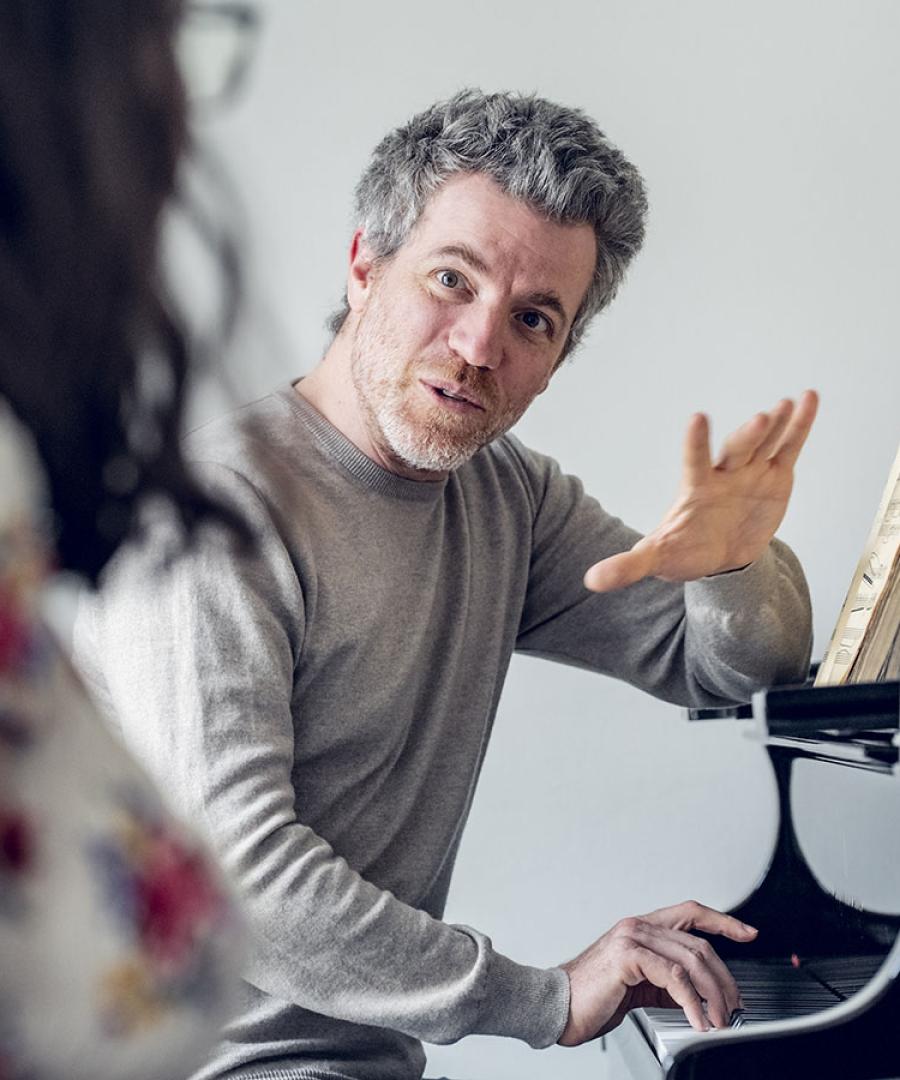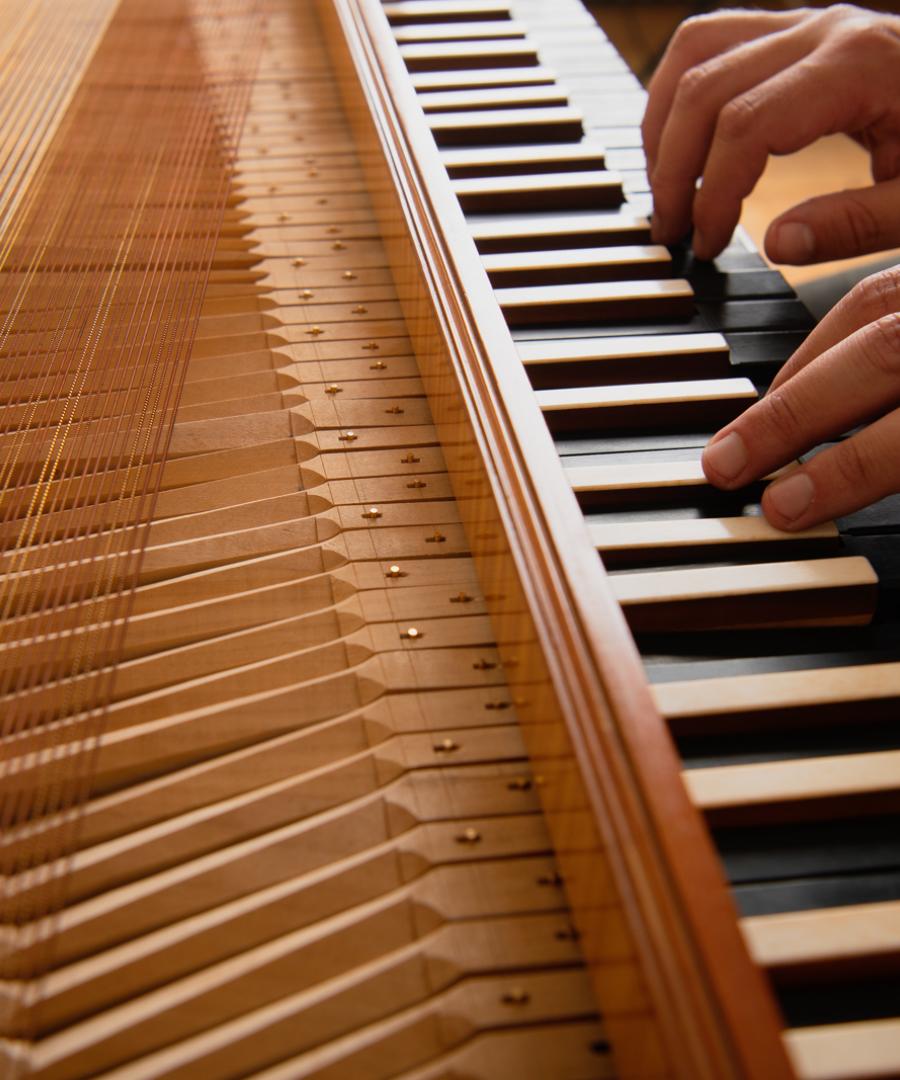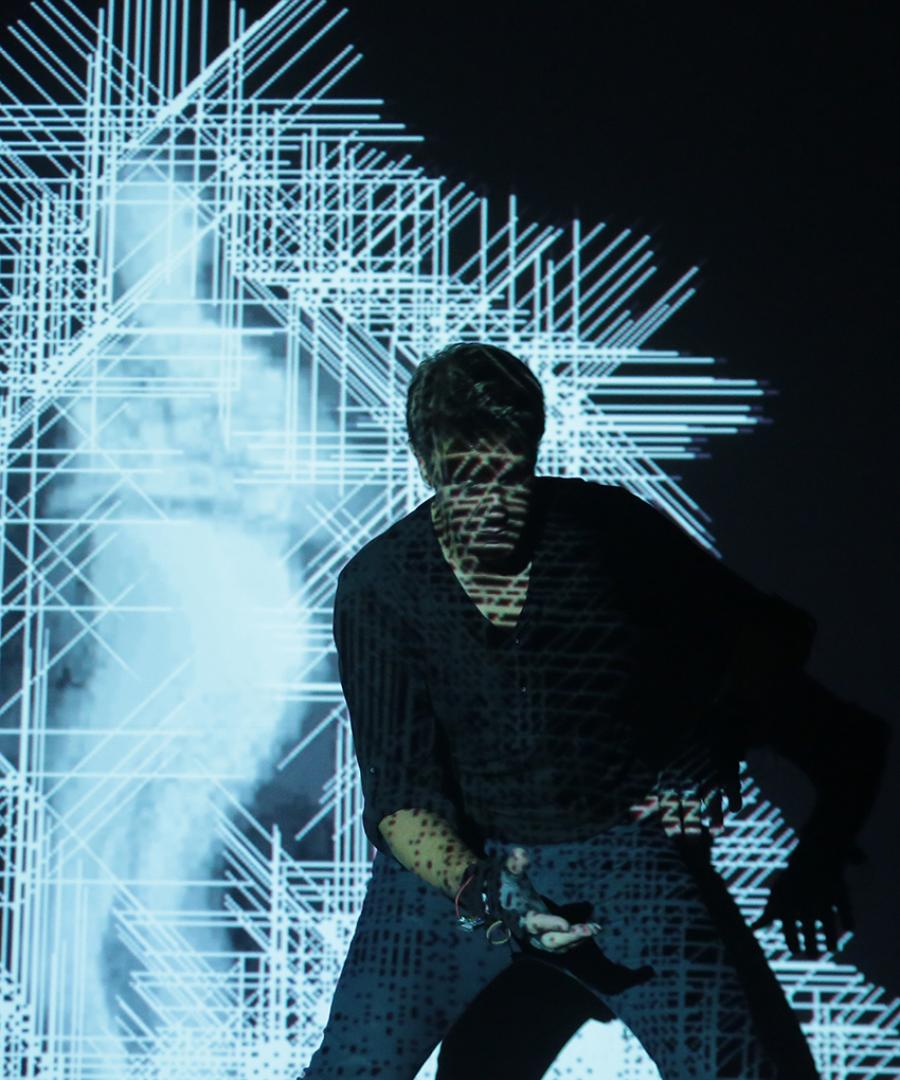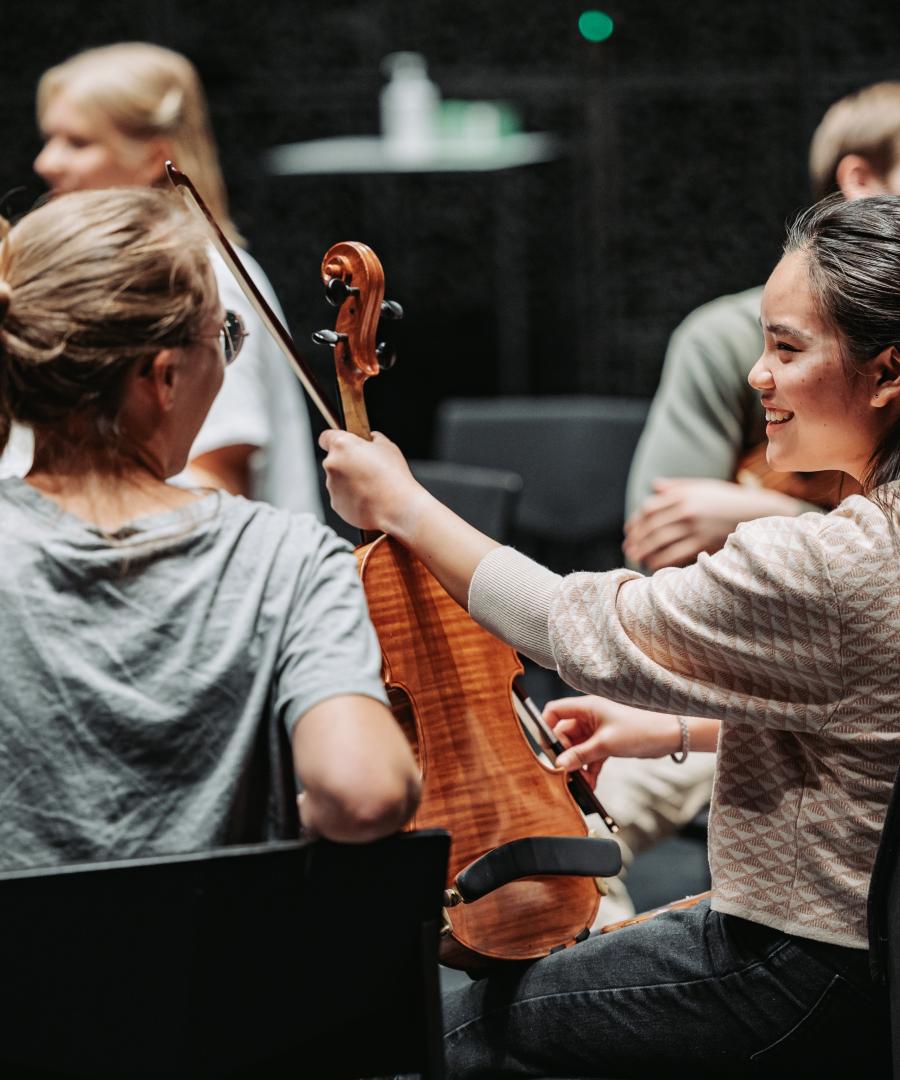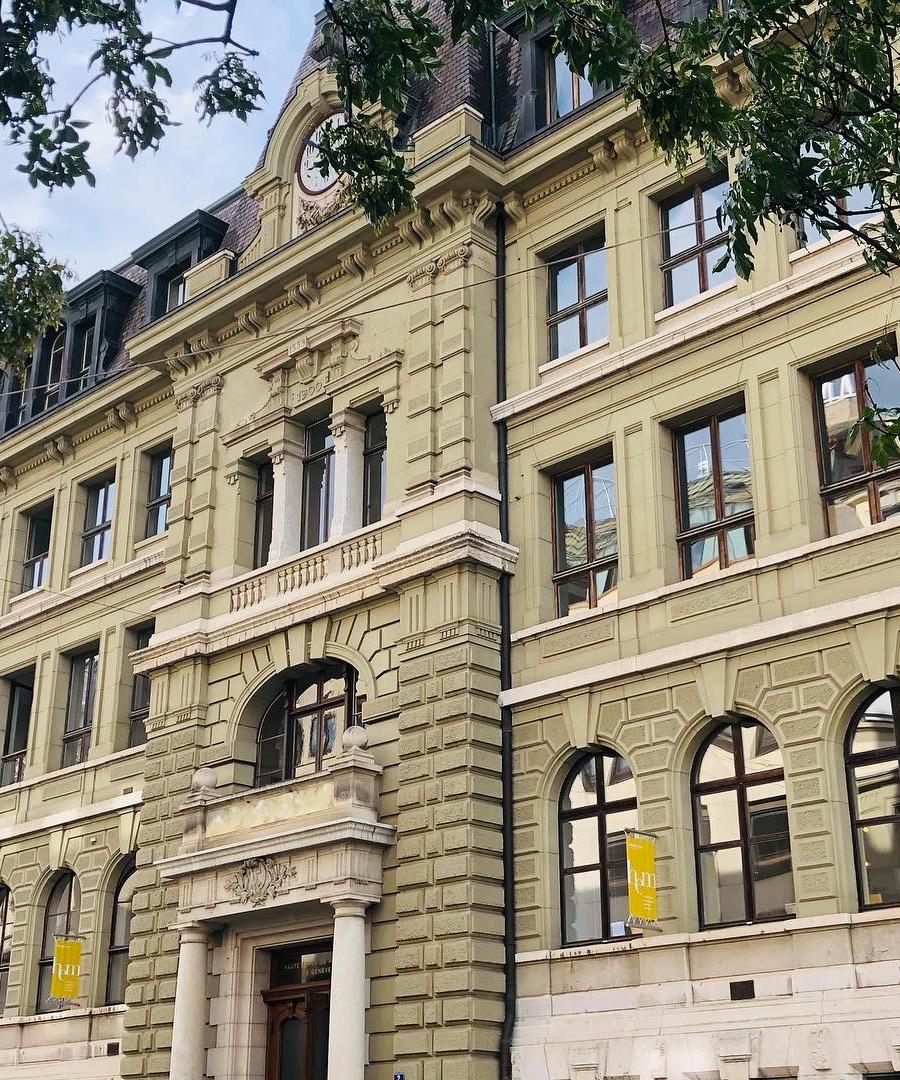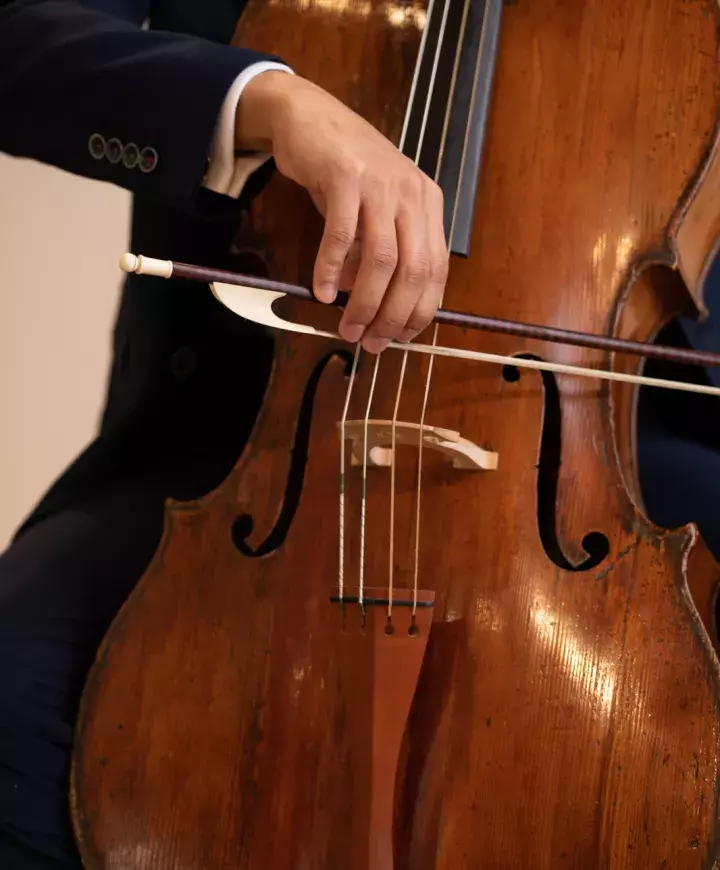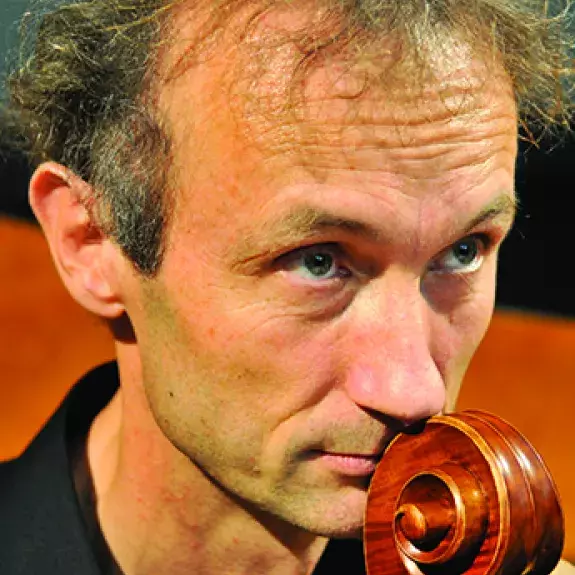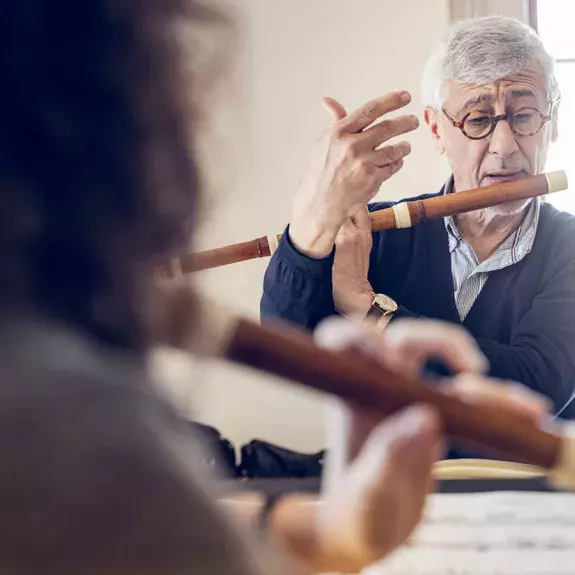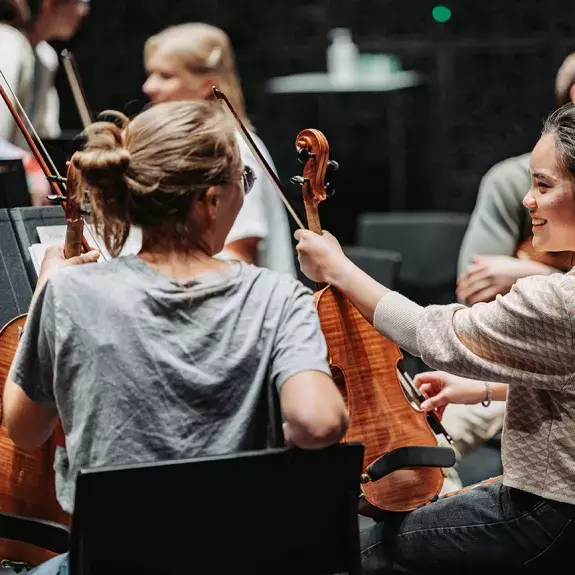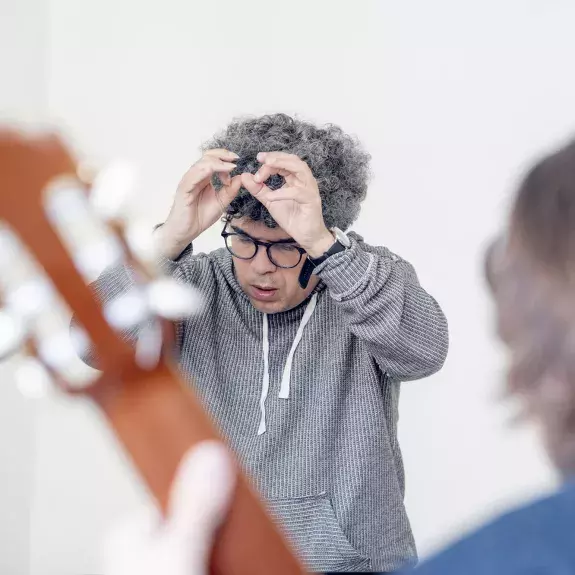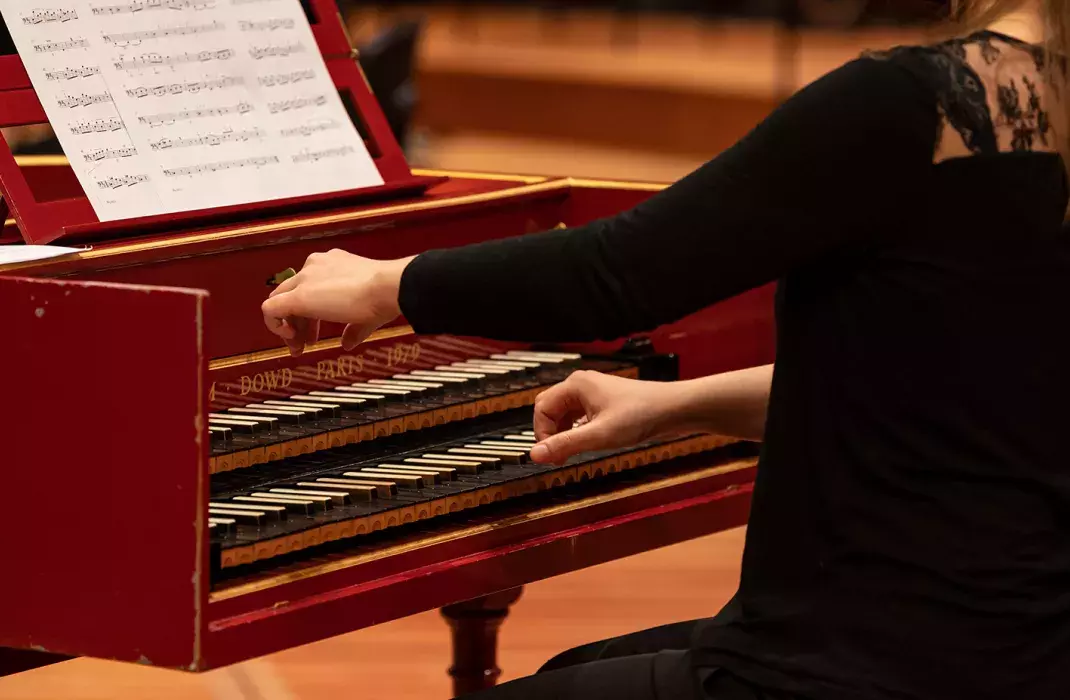- Studies
- Disciplines
- Research
- Events
- The school
Baroque cello
The baroque cello class offers students the chance to explore a vast repertoire that enables them to better understand where their instrument comes from and to trace its evolution: the golden age of the reduction on the bass violin, the 17th century and the birth of the cello, and the 18th century up until the pre-Romantic period.
Under the guidance of its professor Bruno Cocset, a renowned soloist and chamber musician, the baroque cello class at the Haute école de musique de Genève (HEM) prepares its students for a multifaceted career in music, ranging from the interpretation of the soloist repertoire to that of polyphonic and orchestral works, but also to the teaching and passing on of knowledge.
The baroque cello class at the Haute école de musique de Genève (HEM) makes available to its students a particularly extensive collection of instruments and bows: a bass violin with 5 strings on an Amati model, a cello with 5 strings, several cellos with fittings and tuning keys suited to the playing of 18th century music, classical and romantic cellos, and bows with pinched bow frogs that enable students to explore the ‘underhand’ bowing technique. Playing on the catgut string is treated as the main vector for producing sound, involving work on one’s posture and attitude with the instrument. Every aspect of playing with the lower bow are explored: solo playing, sole accompaniment or in the context of a basso continuo with several instruments, chamber music, discovering the violin consort.
Moreover, our students are encouraged to take part in numerous activities arranged by the HEM’s department of early music, which regularly invites eminent performers and researchers from all over the world to give Masterclasses and seminars. The goal is to encourage the development of a thoughtful approach, with a view to achieving a deeper contextualization of the practice and repertoire of their instrument.
Finally, the baroque cello class regularly collaborates with the HEM’s other departments, and with internationally acclaimed Swiss ensembles, on ‘side-by-side’ artistic projects, which constitute a real gateway to the professional world.
